If y=sec x tan x then find dy/dx 251077-If y=sec(sqrt(tan x)) then find (dy)/(dx)
Math Write an equation of the tangent function with period (3π)/8, phase shift π/5, and vertical shift 2 Ex 56, 9 If x and y are connected parametrically by the equations without eliminating the parameter, Find 𝑑𝑦/𝑑𝑥, 𝑥=𝑎 sec 𝜃, 𝑦=𝑏 tan𝜃Here 𝑑𝑦/𝑑𝑥 = (𝑑𝑦/𝑑𝜃)/ (𝑑𝑥/𝑑𝜃) Calculating 𝒅𝒚/𝒅𝜽 𝑑𝑦/𝑑𝜃 = 𝑑 (𝑏 tan𝜃 )/𝑑𝜃 𝑑𝑦/𝑑𝜃 = 𝑏Obtain the solution (3tan x2cos y) sec^2x dx tan x sin y dy = 0 fullscreen Expand
If Y Sec X Tan X Then Prove That D 2y Dx 2 Cosx 1 Sinx 2 Sarthaks Econnect Largest Online Education Community
If y=sec(sqrt(tan x)) then find (dy)/(dx)
If y=sec(sqrt(tan x)) then find (dy)/(dx)-I can hardly make sense of this, but maybe I should put Having solved the de, I see that if I had started by dividing by x, the equation would then have become exactThe derivative of sec x with respect to x is written as d/dx(sec x) and it is equal to sec x tan x Let us learn more about the differentiation of sec x along with its formula, proof by different methods, and a few solved examples Then, sec y = x (1) Differentiating both sides with respect to x, sec y tan y (dy/dx) = 1 dy/dx = 1




If Y Sec X Tan X Than What Is The Value Of Dy Dx Quora
Find the general solution of the differential equation $\frac{dy}{dx}\tan x\tan y=\cos x\sec y$ My try $\frac{dy}{dx}\tan x\tan y=\cos x\sec y$ $\implies \frac{dyAnswer (1 of 4) tan y = sin x Differentiating implicitly wrt x sec^2 y dy/dx = cos x dy/dx = cos x / sec^2 y tan y = sin x tan^2 y = sin^2 x tan^2 y 1 = sin^2 If dy/dx = tan (x), then y= A) 1/2 (tan x)^2 CB) (sec x)^2 CC) lnsec x CD) lncos x CE) sec x tan x C If dy/dx = tan (x), then y= A) 1/2 (tan x)^2 C B) (sec x)^2 C C) lnsec x C D) lncos x C E) sec x tan x C 2
Solution for sec y x tan y dy 1 tan y Q Determine whether the sequence defined as follows has a limitIf it does, find the limit (If an an A Let {an} be a real sequence and L be a real number then limit of this sequence {an} = L iff an tendsSolution Verified by Toppr Correct option is B) Given,y=tan −1(secxtanx) ⇒y=tan −1tan( 4π 2x ) ∵tan( 4π 2x )=secxtanx ⇒y= 4π 2x On differentiating wrt x we get dxdy =0 21 = 21 Video Explanation Solve any question of Continuity and Differentiability with Patterns of problems > Was this answer helpful? Learn how to differentiate y=ln (secxtanx) in this video Alternatively, you can use these workings ln(secx tanx) = y ey = secx tanx ey ⋅ dy dx = secxtanx sec2x ey ⋅ dy dx = secx(secx tanx) dy dx = secx(secx tanx) ey dy dx = secx(secx
Get an answer for 'If tan(xy)=x, then determine dy/dx' and find homework help for other Math questions at eNotesLet y = sec^2 x Let sec x = t Then y = t^2 This implies dy/dt = 2t = 2 sec x t = sec x implies dt/dx = sec xtan x So dy/dx = (dy/dt)×(dt/dx) = 2sec x sec x tan x = 2 sec^2 x tan xIf y=sec(tan^1x) then dy/dx # School If y=sec(tan^1x) then dy/dx Post Answer Answers (1) D Deependra Verma Solution We have , Then , Similar Questions An Unbiased coin is tossed 4 times What is the Probability of getting (i) 3 heads Q If (a – b c) (b – c 2d) (2a c – d




Find The Derivative Of Y Sec Tan X Brainly In
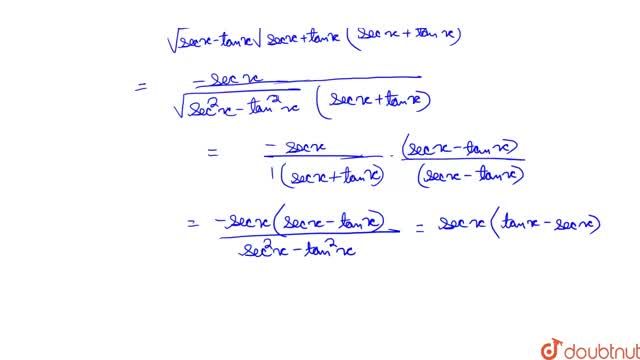



Find Dy Dx When If Y Sqrt Sec X Tanx Sec X Tanx Show That Dy Dx Sec X Tanx Sec X
Given y = sec x o We know π radian = 180 degree x o = (π/180)x radians So y = sec (π/180)x dy/dx = sec (π/180)x tan (π/180)x (π/180) = (π/180) sec x If y = sec(tan^1x), then dy/dx at x = 1 is equal to asked in Limit, continuity and differentiability by Vikky01 (418k points) differentiation;Free math problem solver answers your algebra, geometry, trigonometry, calculus, and statistics homework questions with stepbystep explanations, just like a math tutor




Solve Dy Dx Y Secx Tanx Youtube




Solved 13 Find Dy Where Y Sec X Y Cot X Dx A 0 Y Sec X Tan X 1 X 1 4 3y Sec X 1 B
In this problem we have been given that divided by dx That is 10 x And we have to determine the value of Y So in order to get the value of Y, let's take Dx to the other side and let's integrate both sides And upon integration we observe that integration of divide that's just why and integration of 10 X That is log of mud psychics And there will also come a constant C What is the equation of a curve passing through (0, 1) and whose differential equation is given by `dy = y tan x `y = sec x` D `y = "cosec" x` If dy = ( sec x y) / tan x ) dx, then the curve is In a company's parking area, the number of bikes to that of cars are in the ratio 7 5




Solved 1 2 67 F U Cot V1 1 18 X J 55x 23 Y Chegg Com




Find The Derivative Of Secx 1 Secx 1
If y = tan1 ( sec x tan x) , then (dy/dx) = Q If y = tan−1(secx − tanx), then dxdy = 41 COMEDK COMEDK 07 Continuity and Differentiability Report Error A 2 B −2 C 21 D −21 Solution y = tan−1(secx− tanx) ⇒ dxdy = 1(secx−tanx)21(secx× tanx− sec2x) = 1sec2xtan2x−2secxtanxsecx(tanx−secx) = 2sec2x−2secxtanxsecx(tanx−secx)Use the chain rule to show that, if y = sec (x), then dy/dx = sec (x)tan (x) First, write y in terms of cos (x) We are familiar with cos (x) and know how to differentiate it We know that sec (x) = 1/cos (x) = (cos (x)) 1 Next, find dy/dx in terms of cos (x) and sin (x)If y=x^lnx tan^1x then find (dy)/(dx) at x=1



If Y Sec X Tanx 1 1 Sec X Tanx Find Dy Dx At X 0 Sarthaks Econnect Largest Online Education Community



How To Solve Dy Dx Tan Y X Y X Quora
Dx d (tan x) = sec²x dx d (cot x) = –cosec²x dx One condition upon these results is that x must be measured in radians Applying the Chain Rule The chain rule is used to differentiate harder trigonometric functions Example Differentiate cos³x with respect to x Let y = cos³x Let u = cos x therefore y = u³ dy = 3u² du du = sin xIf sin y = x sin(ay) , then dy/dx =?How do you solve the math (x sin y/xy cos y/ x) dx x cos (y/x) dy =0?




If Y Log Secx Tan X Then Dy Dx Youtube




Ex 9 6 4 Find General Solution Dy Dx Sec X Y Tan X
For y to be defined x 2 1 x 2 < 1 which is true for all x ∈ R Now , y = sin 1 x 2 1 x 2 ⇒ x 2 1 x 2 = sin y ⇒ x = sin y 1 sin ySee the answer See the answer See the answer done loading Show transcribed image text Expert Answer Who are the experts? If y = sec x tan x, find dy/dx Stepbystep explanation We have y = ( secx tanx ) We have y = ( secx tanx )Now differentiate both sides with respect to x



What Is The Value Of Tanx When Secx Tanx Y Quora




If Y Sec X Then Find Dydx
Free implicit derivative calculator implicit differentiation solver stepbystepDy/dx = cos^2(xy) – y / x Answer 3 d/dx (tan u) = sec^2 u du/dx So d/dx (tan xy) = sec^2 (xy) x dy/dx y So sec^2(xy) x dy/dx y = dx/dx = 1 sec^2(xy) x dy/dx = 1 – y sec^2(xy) dy/dx = 1 – y sec^2(xy) /x sec^2(xy) Conclusion Above is the solution for "If tan(xy) = x, then dy/dx =" We hope that you find a good5 (3) (3) (0) Choose An Option That Best Describes Your Problem Answer not in Detail




If Y Secx Tanxsecx Tanx Then Dydx Equals
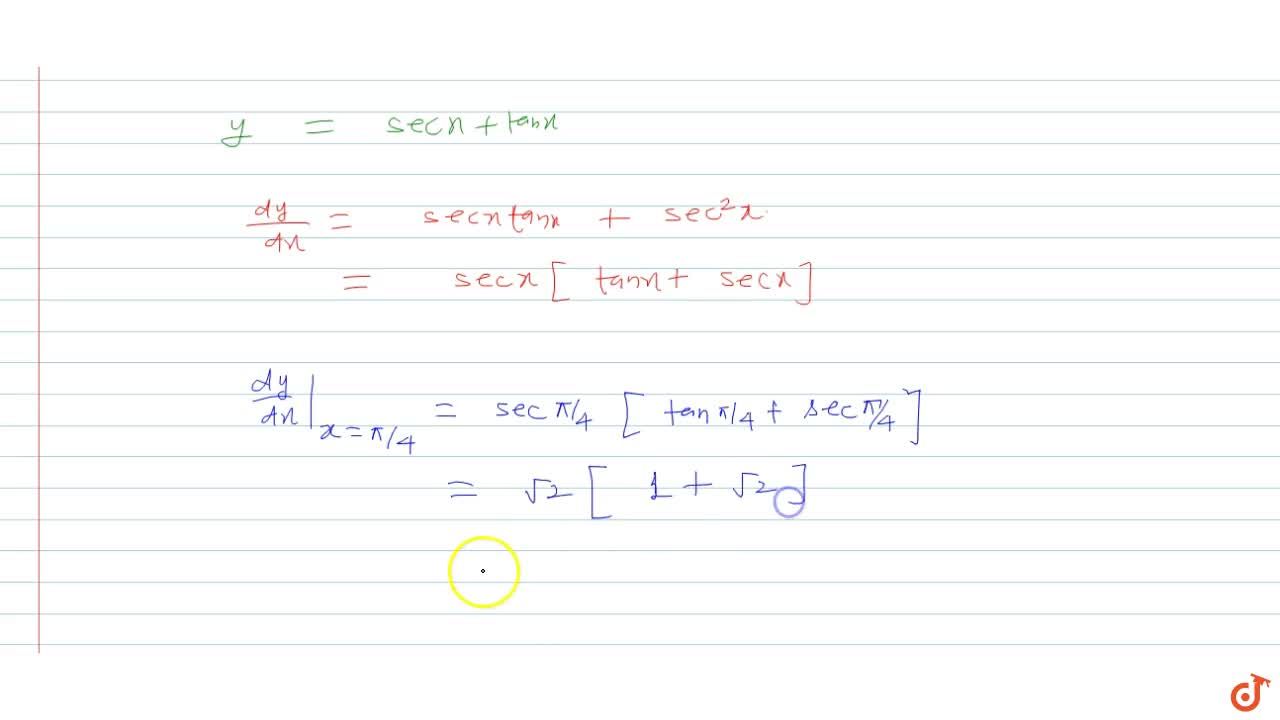



If Y Secx Tanx 1 Tanx Secx 1 Find Dy Dx X Pi 4
Solved Given, y=\tan(\sin^{1}x) then find \frac{dy}{dx} Solve your problem for the price of one coffee Available 24/7 Math expert for every subjectIf `y="sec"(tan^(1)x),` then `(dy)/(dx)` at `x=1` is equal to `1/(sqrt(2))` (b) `1/2` (c) 1 (d) `sqrt(2)` asked in Differentiation by VaibhavNagar ( 933k points) class12Find dy/dx y=sec(tan(x)) Differentiate both sides of the equation The derivative of with respect to is Differentiate the right side of the equation Tap for more steps Differentiate using the chain rule, which states that is where and Tap for more steps To apply the Chain Rule, set as




If Y Sec X Tanx Secx Tanx Then Find Dy Dx Youtube




If Y Sec Tan 1 X Then Dy Dx At X 1 Is Equal To Youtube
Answer (1 of 3) An easy way is to use logarithmic differentation ln y = (sex x) ln (x) Differentiating wrt x, we get (1/y) (dy/dx) = (sec x)(tan x) (ln xBooks Physics NCERT DC Pandey Sunil Batra HC Verma Pradeep Errorless Chemistry NCERT P Bahadur IITJEE Previous Year Narendra Awasthi MS Chauhan Biology Draw graph of y = sec x and find the period Follow Us Popular Chapters by Class Class 6 Algebra BasicIf y = tan x^tan x^tan x, then dy/dx is Get the answer to this question and access a vast question bank that is tailored for students Login 1/tan x log tan x) dy/dx = y log y sec 2 x (1 log (tan x) 1/tan x log tan x) Was this answer helpful?



2




If Y Sec Tan 1 X Then Dy Dx Is Youtube
X and y be two variables such that x > 0 and xy = 1, then the minimum value of (x y) is Q7 If the tangent of the curve x = at2, y = 2at is perpendicular to xaxis, then its point of contact is Best answer Given, xy = yx Taking logarithm on both sides, we get y log x = x log y Differentiating both sides, wrt x y (1/x) log x (dy/dx) = x (1/y) (dy/dx) log y 1 (y/x) (log x) (dy/dx) = (x/y) (dy/dx) log y (dy/dx) log x (x/y) = log y (y/x) (dy/dx) (y log x Calculate the following integral ∫ sec^4 (3x)/ tan^3 (3x) dx For this one, can I bring up the tan to tan^3?




If Y Log Sec X Tan X Then Dy Dx
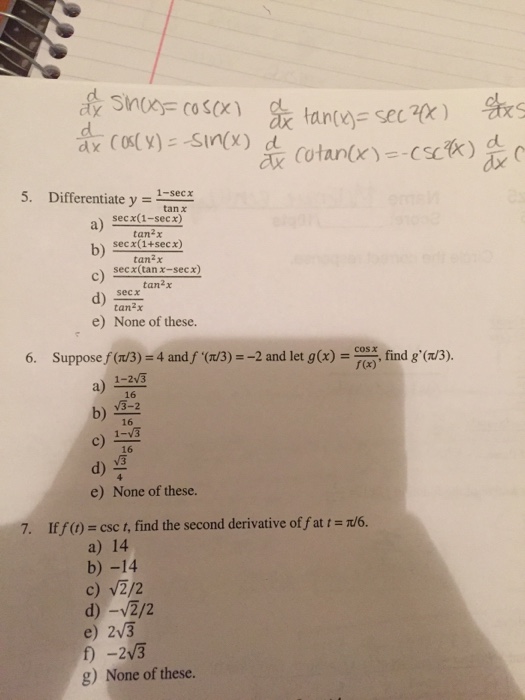



Solved Differentiate Y 1 Sec X Tan X Sec X 1 Sec X Tan 2 Chegg Com
Choose the correct option from the given alternatives If y = sec (tan –1 x), then `"dy"/"dx"` at x = 1, is equal toFind dy/dx of y = sin(x) tan(x) Question Find dy/dx of y = sin(x) tan(x) This problem has been solved!Experts are tested by Chegg as specialists in their subject area We review their content and use your feedback to




If Y Tan 1 Sec X Tan X Then Dy Dx Youtube




Misc 29 Find Derivative X Sec X X Tan X Miscellaneous
Statistics Arithmetic Mean Geometric Mean Quadratic Mean Median Mode Order Minimum Maximum Probability MidRange Range Standard Deviation Variance Lower Quartile Upper Quartile Interquartile Range Midhinge Standard Normal Distribution PhysicsIf y = etan x (log x)tan x then find dy/dx Mathematics and Statistics Advertisement Remove all ads Advertisement Remove all ads Differentiating w r t x, we get `1/u (du)/dx=sec^2x` `therefore (du)/dx=usec^2x` `therefore (du)/dx=e^(tanx)sec^2x` (ii) v = (log x) tan x102 views View upvotes Submission accepted by Vishwajeet Gupta Answer requested by Vishwajeet Gupta 9 2 Share Related Answer Aravind Kumar Worked at CUMMINS India Limited (12–12) 1y 1 tan 2 y = sec x (x tan
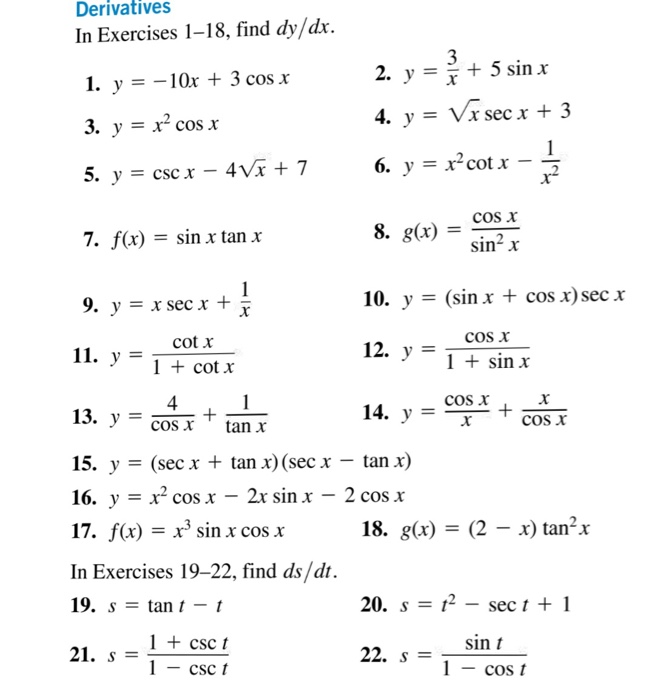



Solved Derivatives In Exercises 1 18 Find Dy Dx 1 Y 10x Chegg Com




Ex 9 6 13 Find Particular Solution Dy Dx 2y Tan X Sin X
Solve your math problems using our free math solver with stepbystep solutions Our math solver supports basic math, prealgebra, algebra, trigonometry, calculus and moreIt is given that x = tan y To determine the derivative `dy/dx` , use implicit differentiation 1 = `sec^2 y*(dy/dx)` => `dy/dx = 1/(sec^2 y)` => `dy/dx = 1/(1 tan^2y)` => `dy/dx = 1/(1 x^2)`Welcome to Sarthaks eConnect A unique platform where students can interact with teachers/experts/students to get solutions to their queries




If Y Sec X Tan X Show That Cos X D 2ydx 2 Y 2



What Is The Second Derivative Of Tanx Secx Quora
To ask Unlimited Maths doubts download Doubtnut from https//googl/9WZjCW If `x^y=y^x`,then find` dy/dx`Click here👆to get an answer to your question ️ If y = sec √(x) , Then find dydx Solve Study Textbooks Join / Login >> Class 12 >> Maths >> Differential Equations >> Introduction to Differential Equations >> If y = sec √(x) , Then find dydx QuestionSolution y = (secx−tanxsecxtanx ) = 1−sinx1sinx ⇒ y = 1−sin2x(1sinx)2 = cos2x1sin2x2sinx ⇒ y = sec2x tan2x2tanxsecx ⇒ y = (secx tanx)2 Now Differentiating (i) wrt x, we get (i) dxdy = 2(secx tanx)secxtanx sec2 x = 2secx(secx tanx)(secxtanx) = 2secx(secx tanx)2




Find Dy Dx If Y Sec X Tanx Secx Tanx Maths Statistics Meritnation Com



If Y Sec X Then Find Dy Dx Sarthaks Econnect Largest Online Education Community
Then to find y, both sides should be integrated with respect to x, so that ∫(1/y)dy = ∫(sec x)^2 dx The integral of 1/y with respect to y is ln y, the natural logarithm of y, and and the integral of (sec x)^2 with respect to x is tanx Also, an arbitrary constant must be added The resultant equation isLog y = cot x log (tan x)যদি y = (tan x)^(cot x) " then " (dy)/(dx)= ? Transcript Ex 96, 4 For each of the differential equation given in Exercises 1 to 12, find the general solution sec = 0 < 2 Differential equation is of the form Py = Q where P = sec x and Q = tan x Finding integrating factor, IF = IF = e sec IF = e sec tan IF = sec x tan x Solution is y (IF) =
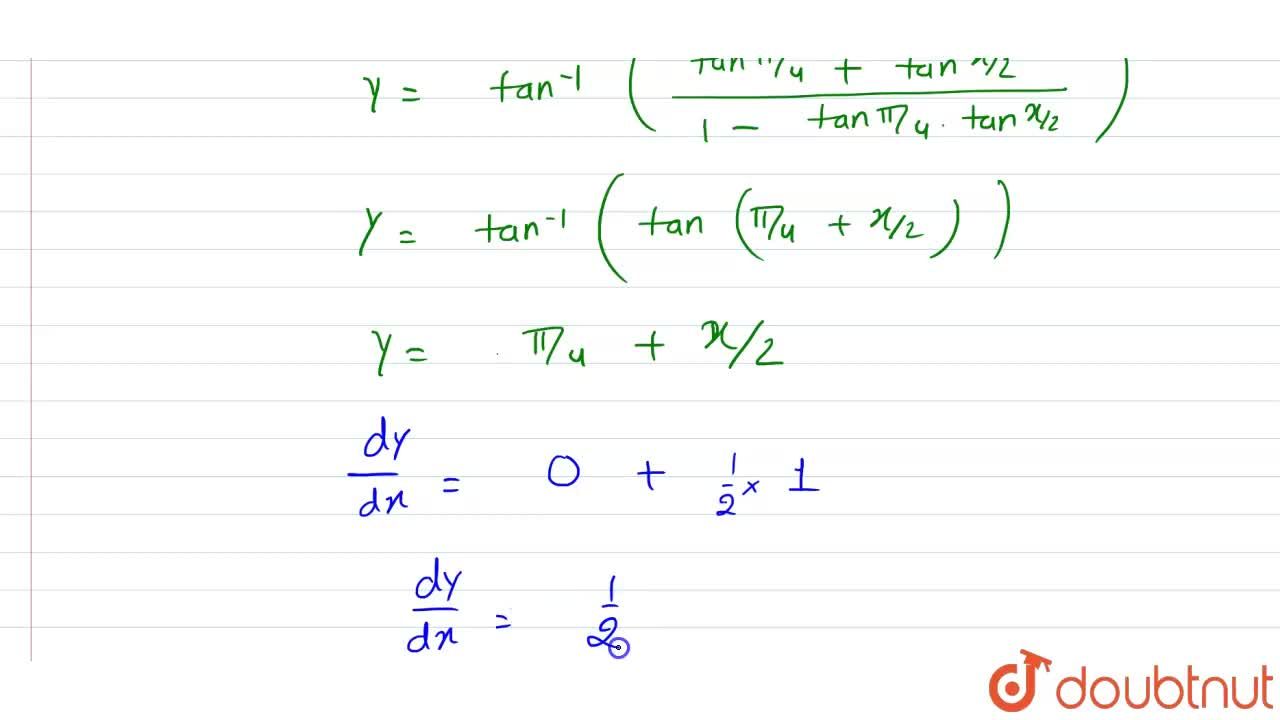



If Y Tan 1 Sec X Tan X Then Dy Dx




Solved Dy If Y E Tan X Then Dx A E Sec X B E Sec Chegg Com
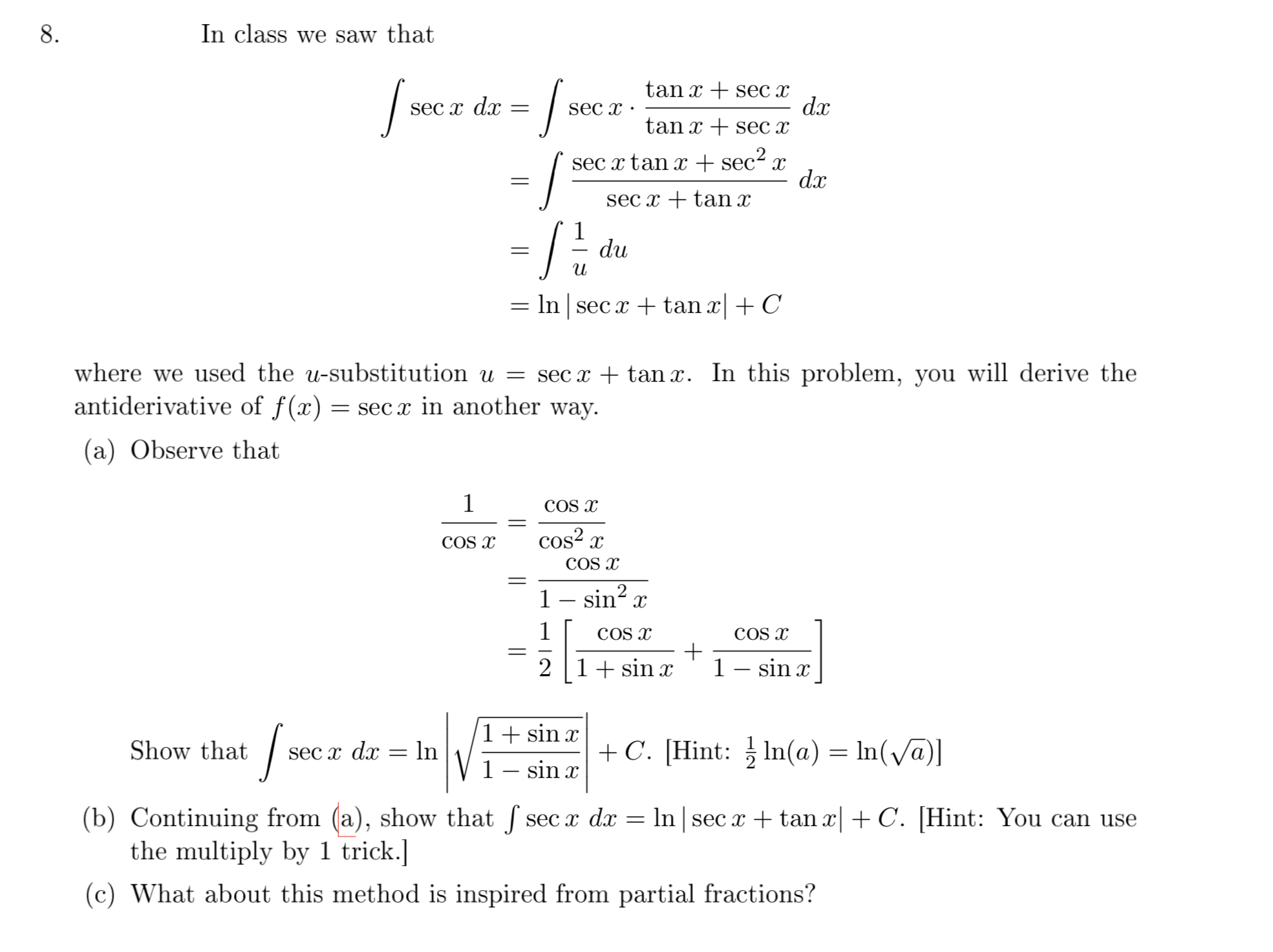



Answered 8 In Class We Saw That Tan X Sec X Bartleby



If Y Sec X Tan X Then Prove That D 2y Dx 2 Cosx 1 Sinx 2 Sarthaks Econnect Largest Online Education Community
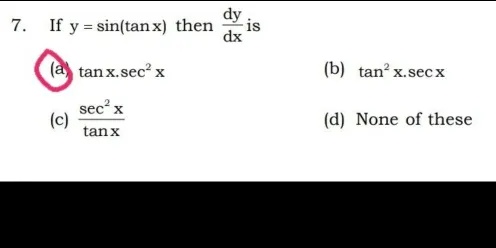



7 If Y Sin Tan X Then Frac Dy Dx Is A Tan X Sec 2 X B Tan 2 Xxsec X C Frac Sec 2 X Tan X D None Of These Snapsolve
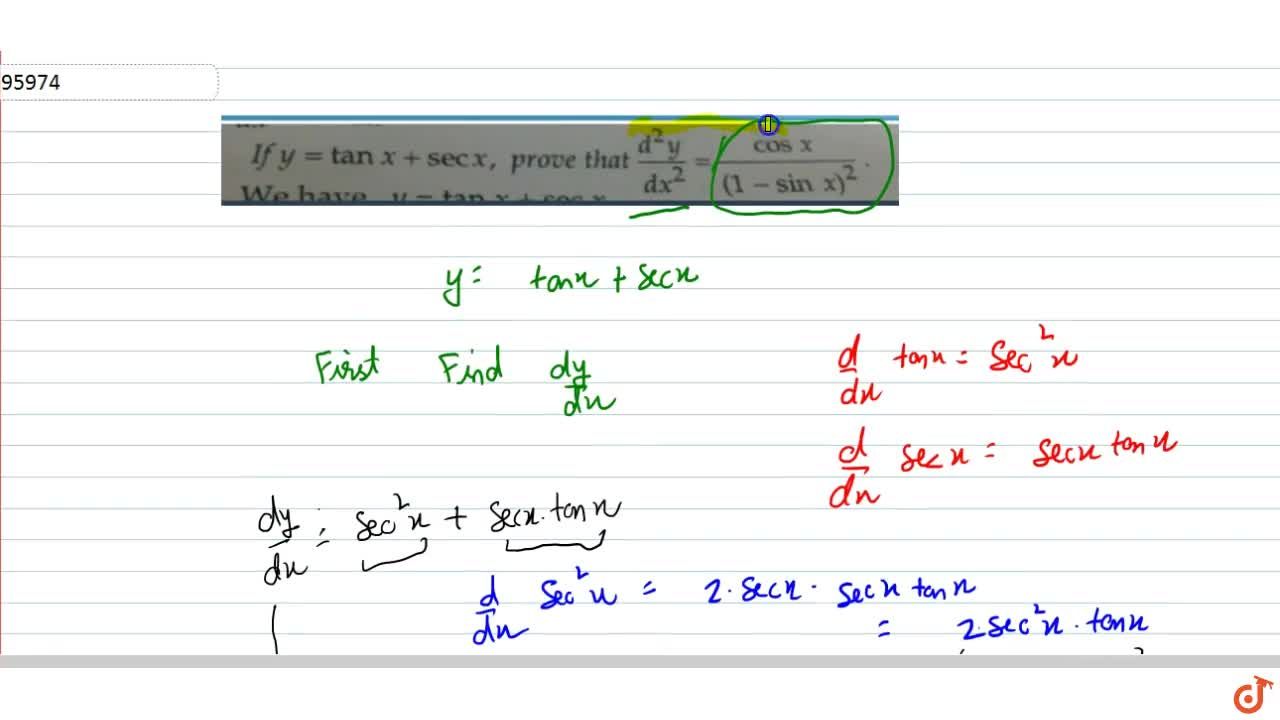



If Y Tanx Secx Prove That D 2y Dx 2 Cosx 1 Sinx 2




Solved Dy Dx Sec X Tan X Sec X 1 3 Find Equation X Chegg Com



Y Sec X Tan X Sec X Tan X Show That Dy Dx Sec X Tan X Sec X Sarthaks Econnect Largest Online Education Community



D Dx Formula
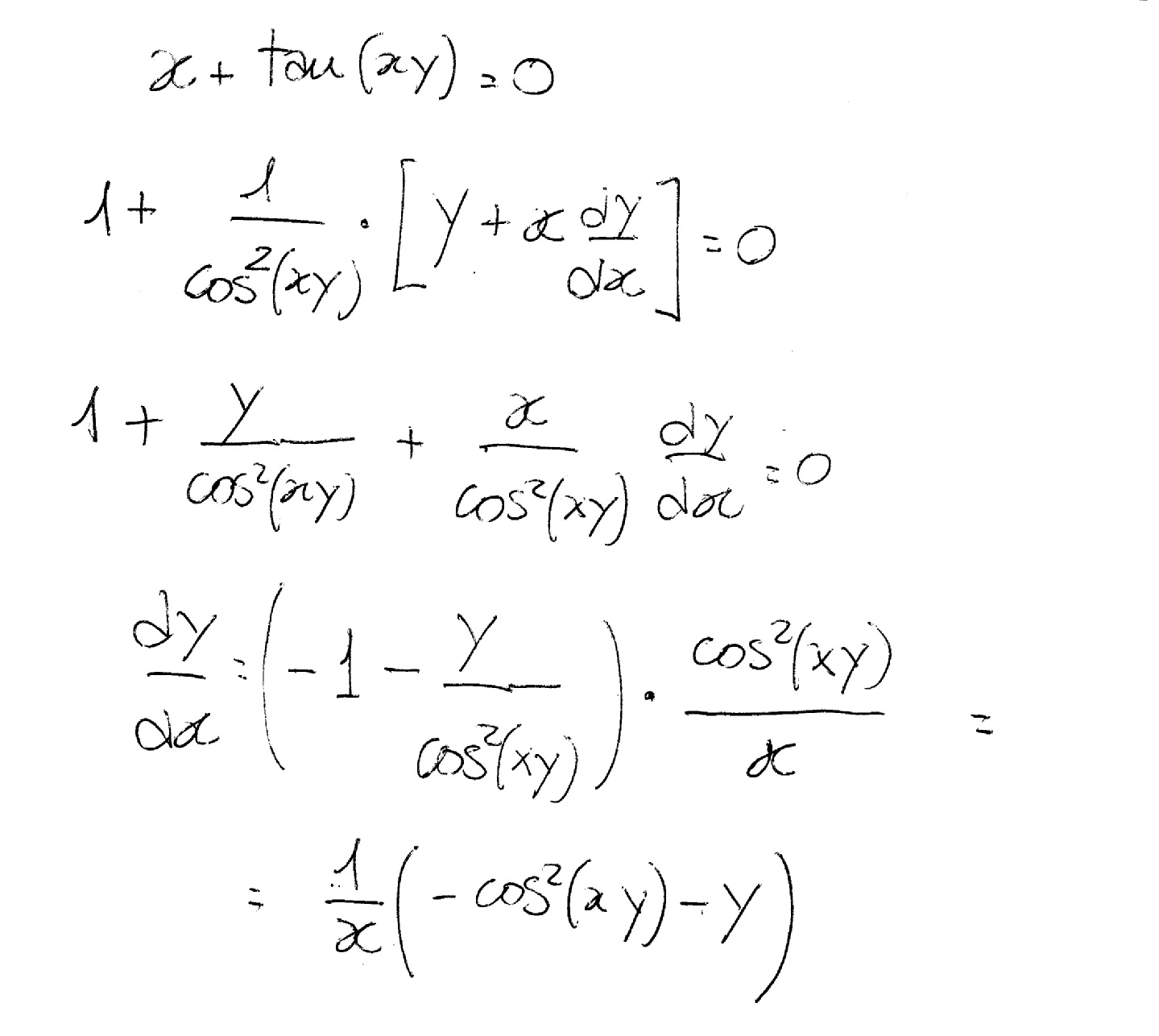



How Do You Find Dy Dx If X Tan Xy 0 Socratic




Derivative Of Sec X Tan X Derivative Graph Integral Formula And More




Drill Find Dy Dx Pptx Powerpoint



If Y Tan 1 Sec X Tan X Then Dy Dx A 1 2 B 1 2 C 1 D None Of These Sarthaks Econnect Largest Online Education Community
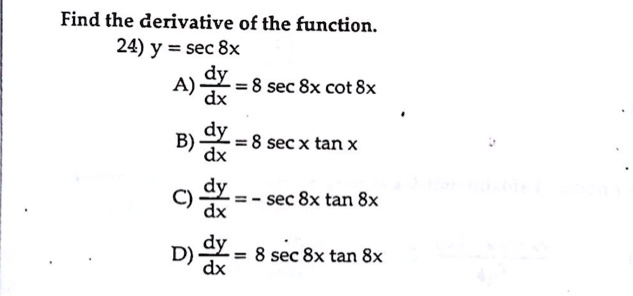



Solved Find The Derivative Of The Function 24 Y Sec 8x A Dy 8 Sec 8x Cot8x Dx B Dy 8 Sec X Tan X Dx C Dx Sec 8x




If Y Tan 1 Secx Tanx Then Dy Dx Is Equal To




Differentiate Xtanx Secx Tanx



What Is The Derivative Of Secx Tanx Secx Tanx Quora




Find Dy Dx If Y Sec Tan X




Derivative Of Sec X Formula Proof Of Differentiation Of Sec X By First Principle Examples




If Y Tan X Y Then Find Dy Dx




If Y Tanx Secx P Rov Et H A T D 2y Dx 2 Cosx 1 Sinx 2 Youtube




If Y Secx Tanx Secx Tanx Then Dy Dx Equals Youtube




D 95 Equals Secx Tan X 14 If Y Dy Then Secx Physics




Solved Question 3 D Y Given That Y Tan X Is A Solution To Chegg Com




If Y Tan 1 Sec X Tan X Then Dy Dx Is Equal To
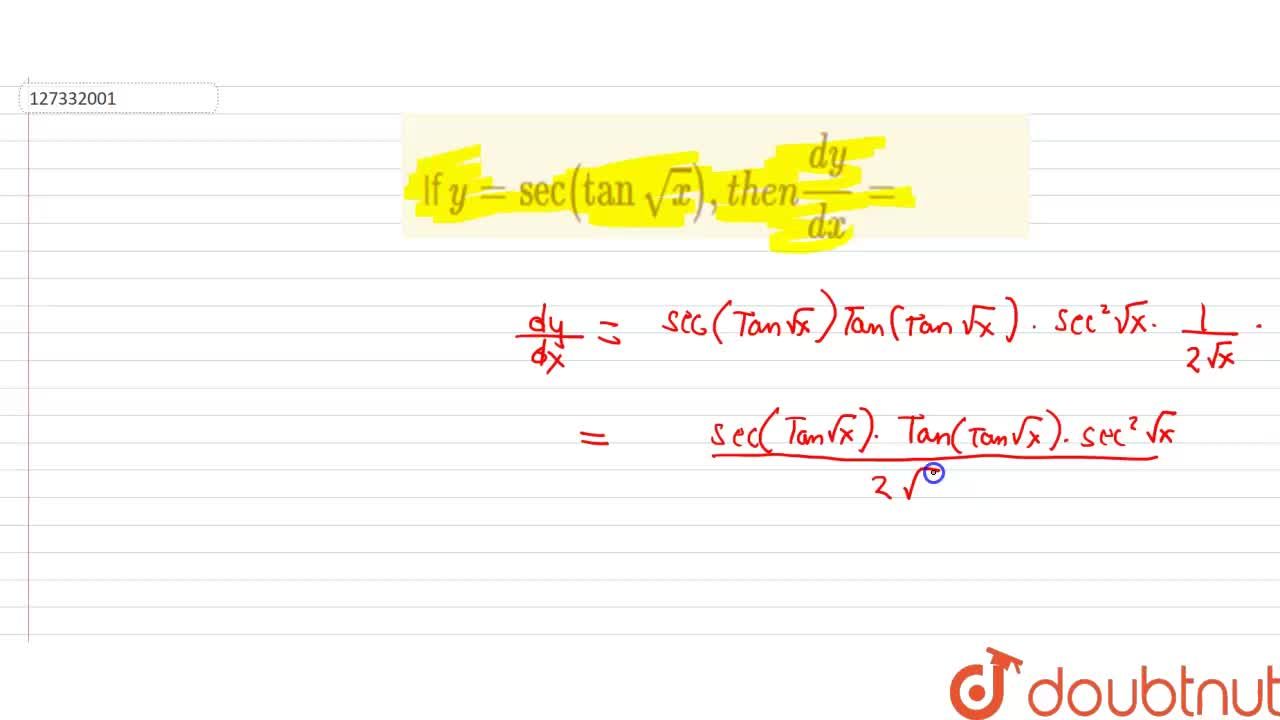



Tan Sqrt Xsec 2 Sqrtx Sec Tan Sqrtx 2sqrtx




Solve The Following Differential Equation Dydx 1 X 2 1 Y 2



If Y Tanx Tanx Tanx How Can I Get Dy Dx At X P 4 Point Quora




Derivatives Of Sec X And Csc X Video Khan Academy
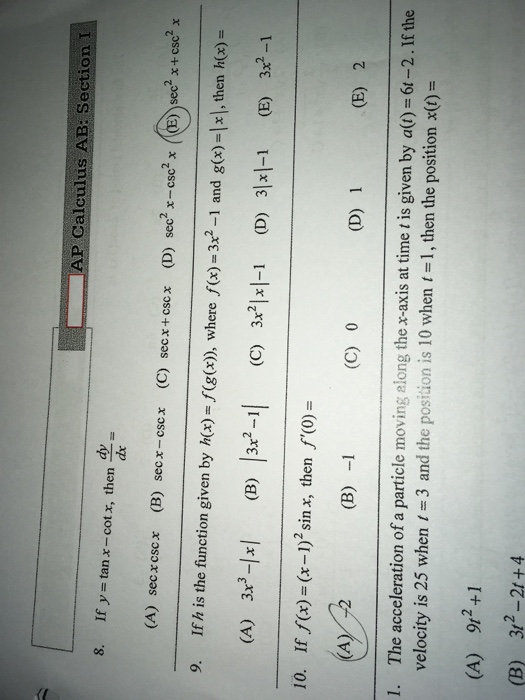



Solved If Y Tan X Cot X Then Dy Dx A Sec X Csc X Chegg Com
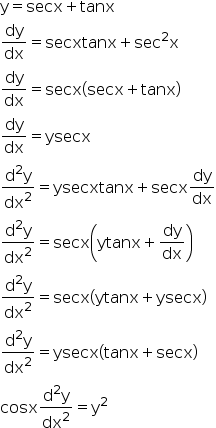



If Y Sec X Tan X Show That Cos X D2y Dx2 Y2 Explain In Great Detail Mathematics Topperlearning Com Rufvucss




If Y Secx Tanx Secx Tanx Then Show That Dy Dx Secx Tanx Secx Askiitians
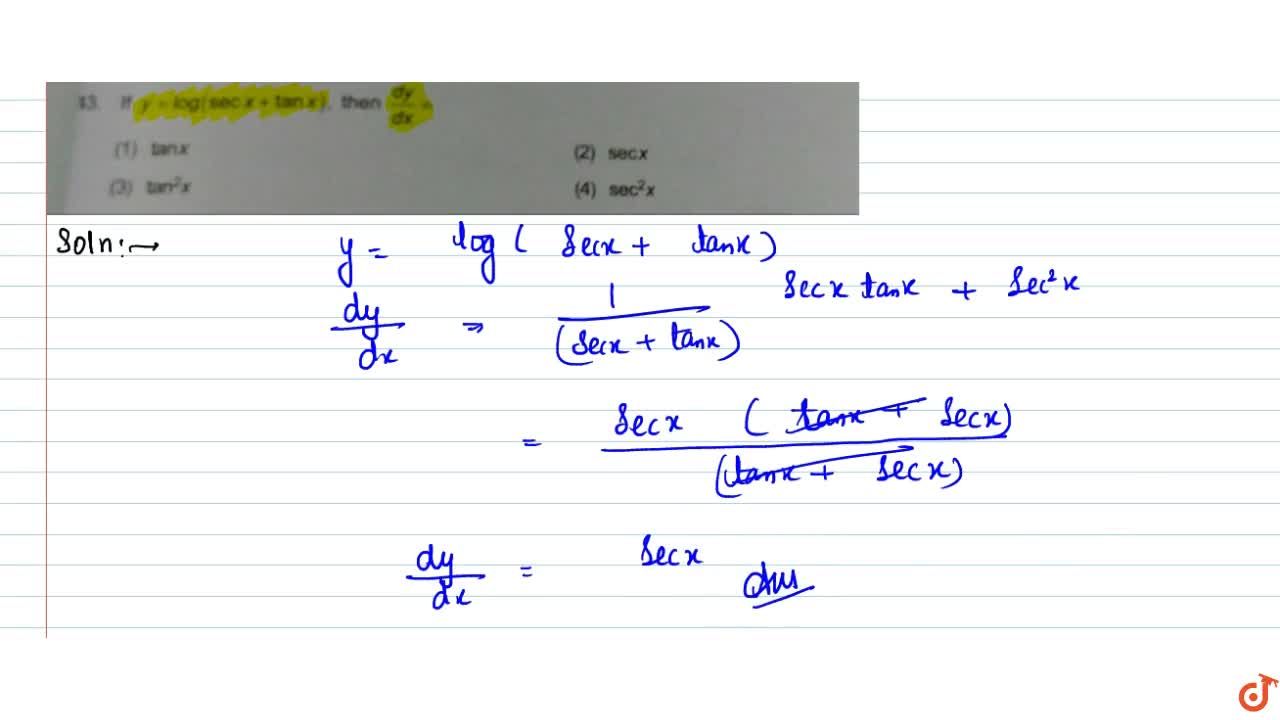



If Y Log Secx Tanx Then Dy Dx




Solved Sinx Cos X And Cos X Sinx 1 Show That Sec X Chegg Com




Ex 9 6 4 Find General Solution Dy Dx Sec X Y Tan X



Derivative Of Secx




Differential Equation D 2 1 Y E X Sec 2 X Tan X Mathematics Stack Exchange




If Y Tan 1 Sec X Tan X Then Dydx




If Y Sec Sqrt Tan X Find Dy Dx Brainly In



If Y Tan X Sec X Then Frac Dy Dx At X Frac 5pi 6 Is Snapsolve




Misc 29 Find Derivative X Sec X X Tan X Miscellaneous




If Y Sec X Tan X Than What Is The Value Of Dy Dx Quora




Misc 32 Definite Integral X Tan X Sec X Tanx Miscellaneous
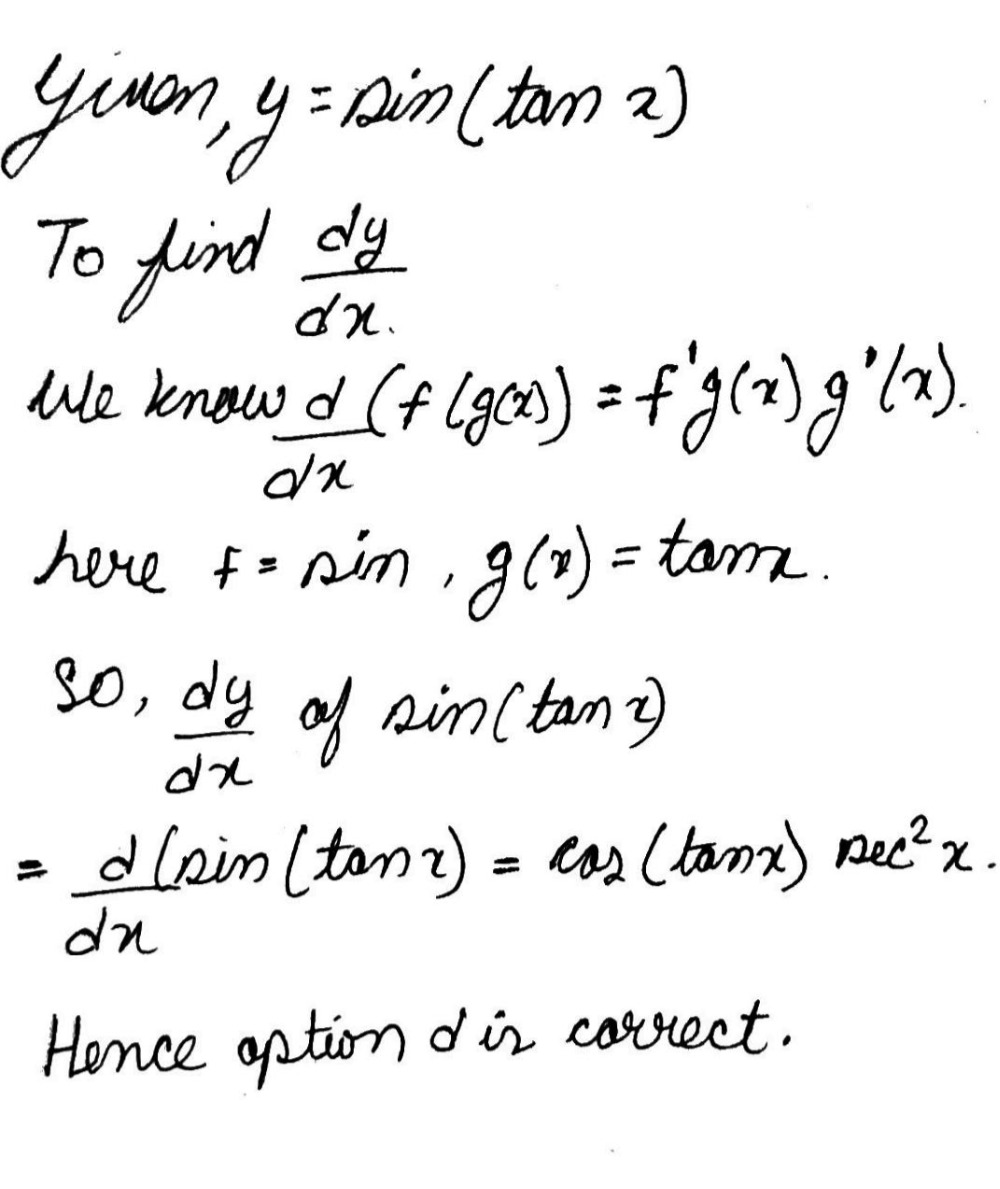



7 If Y Sin Tan X Then Frac Dy Dx Is A Tan X Sec 2 X B Tan 2 Xxsec X C Frac Sec 2 X Tan X D None Of These Snapsolve



3
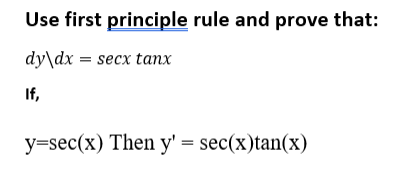



Answered Dy Dx Secx Tanx If Y Sec X Then Y Bartleby




What Is The Derivative Of Secx Tanx Secx Tanx Quora



How To Solve Math 2dy Dx Y Sec X Y 3 Tan X Math Mathematics Is Life
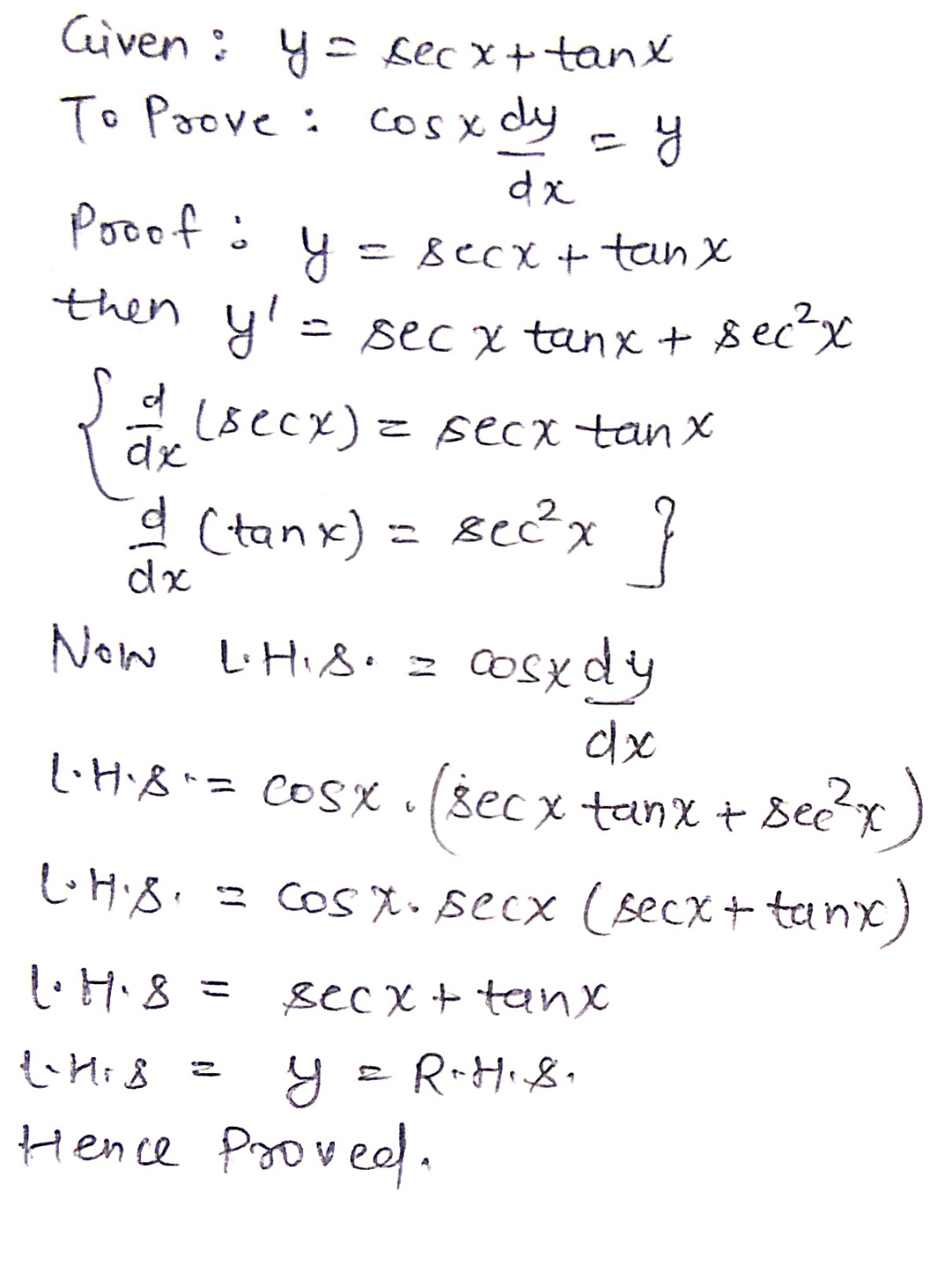



7 If Y Sec X Tan X Show That Cos X Frac Dy Dx Y Snapsolve
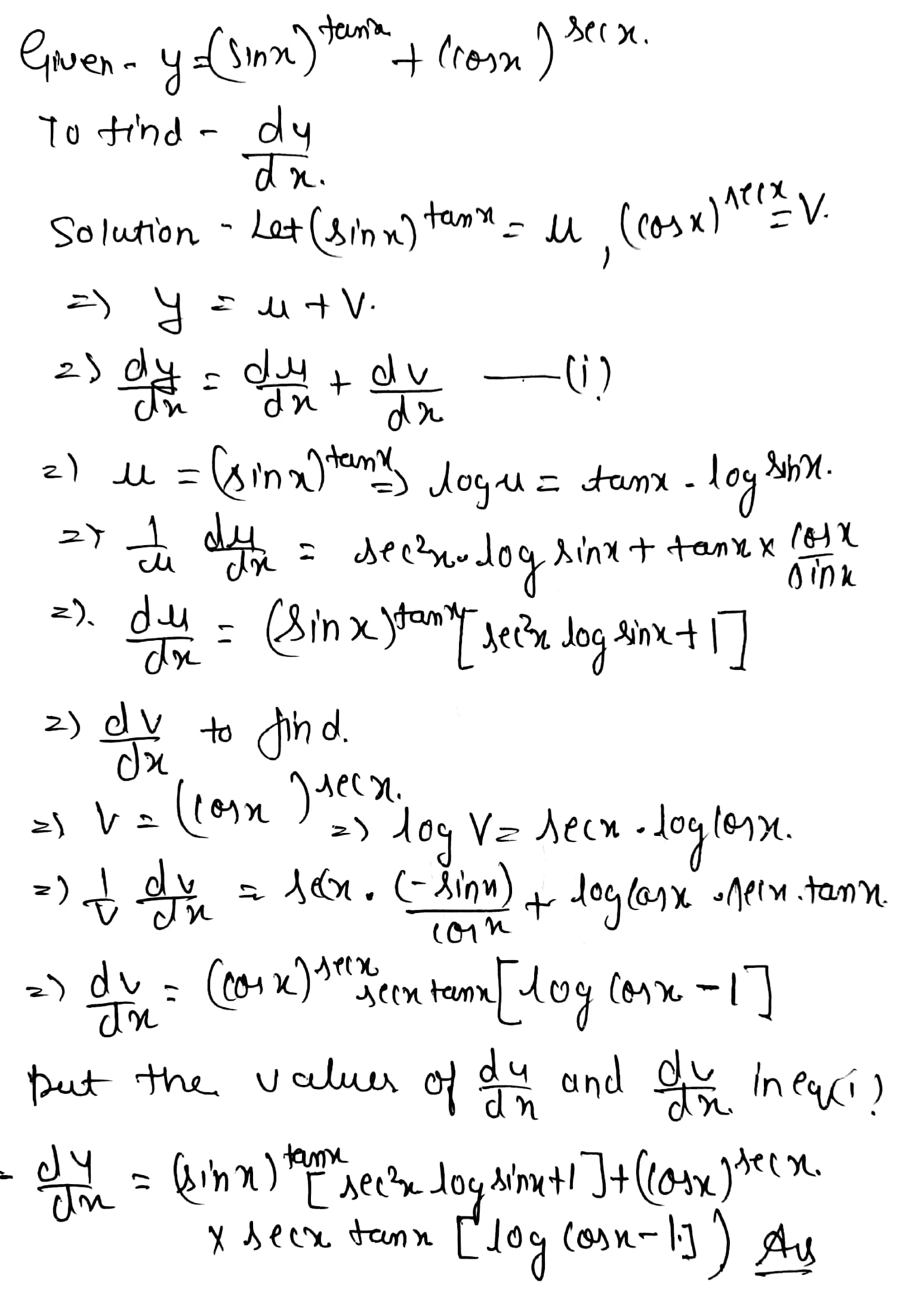



32 If Y Sin X Tan X Cos X Sec X Then Find Frac Dy Dx Snapsolve




Ex 5 2 4 Differentiate Sec Tan Root X Class 12 Ex 5 2




Find Differentiation Of Sec 1tan X




Ex 9 4 4 Find General Solution Sec2 X Tan Y Dx Sec2y



If Y Tanx Secx Prove That D 2y Dx 2 Cosx 1 Sinx 2 Sarthaks Econnect Largest Online Education Community



General Solution Of Dy Dx Y Tan X Sec X Is Sarthaks Econnect Largest Online Education Community



What Is The Solution To Bernoulli S Equation Dy Dx Y Tanx Y 2 Secx Quora




Download 1 Secx Images For Free




If Y Sec Tan X Then Find Dy Dx Brainly In
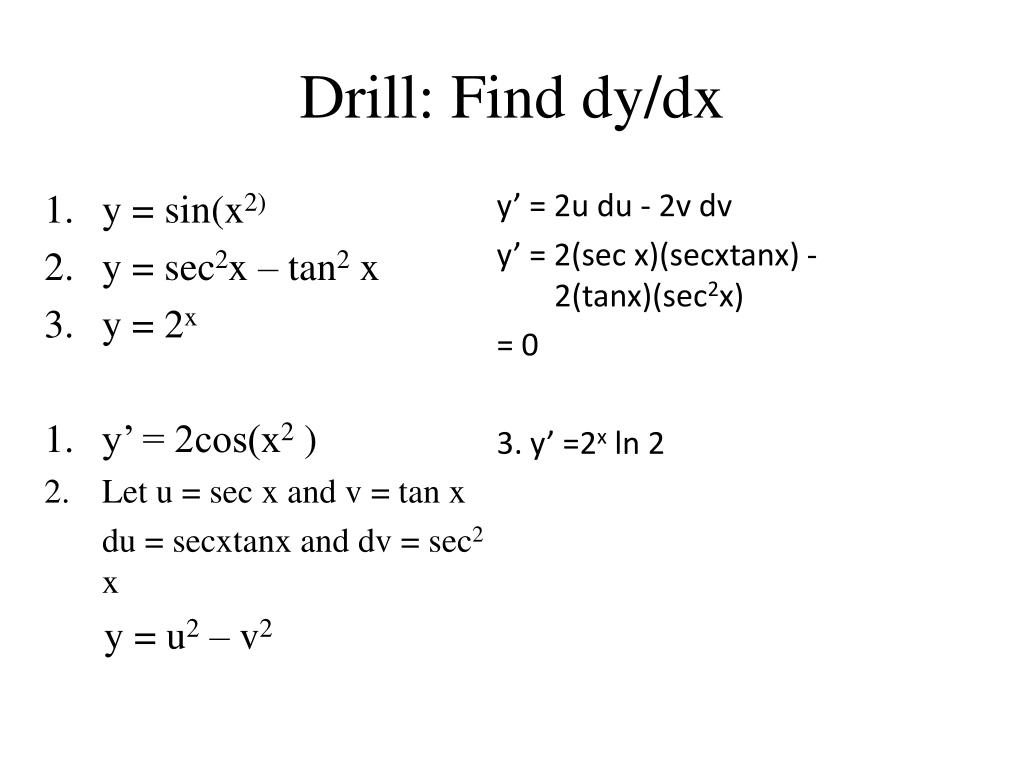



Ppt Drill Find Dy Dx Powerpoint Presentation Free Download Id



How To Solve D 2y Dx 2 Dy Dx Tanx Secx Cosx Quora




If Y Secx Tanxsecx Tanx Show That Dydx Sec X Tan X Sec X




If Y Secx 0 Then Dy Dx




If Y Secx Tanx Then Dy Dx




If Y Secx Dy Dx Secxtanx Implicit Differentiation Proof Youtube
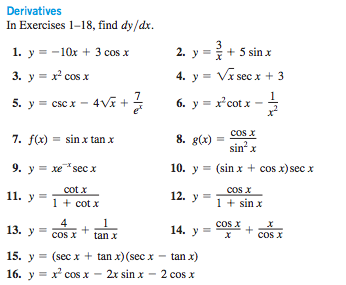



Solved Derivatives In Exercises 1 18 Find Dy Dx 1 Y 10x Chegg Com




If Y Tan 1 Sec X Tan X Then Dy Dx Is Equal To Youtube




Y X Tanx Sec X Tanx Maths Limits And Derivatives Meritnation Com
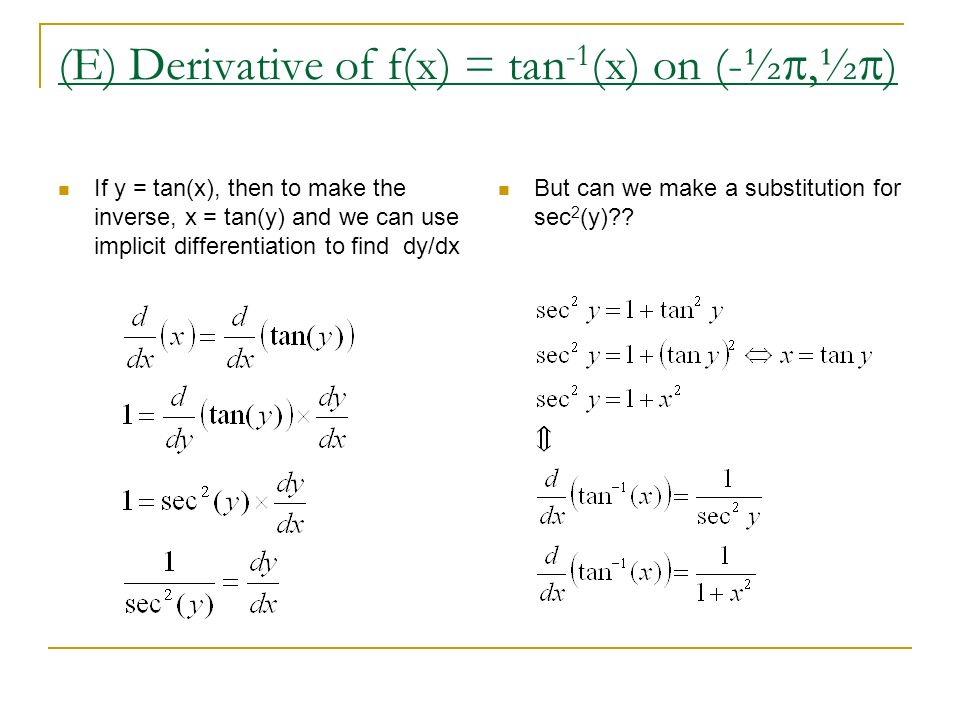



B1 6 Derivatives Of Inverse Trig Functions Ppt Download



If Y Sec X Tan X Then Prove That D 2y Dx 2 Cosx 1 Sinx 2 Sarthaks Econnect Largest Online Education Community




If Y Sinx Tanx Cos X Secx Find Dy Dx Youtube



Solved Lim X Tan X Is Equal To Sin X A Undefined 10 Dy 7 If Y Secx Tanx Then Dx Is Equal To 2 Sec Xtanx 2




Expert Verified Find D Dx Of Log Secx Tanx Brainly In




If Y Secx Tanxsecx Tanx Show That Dydx Sec X Tan X Sec X



1
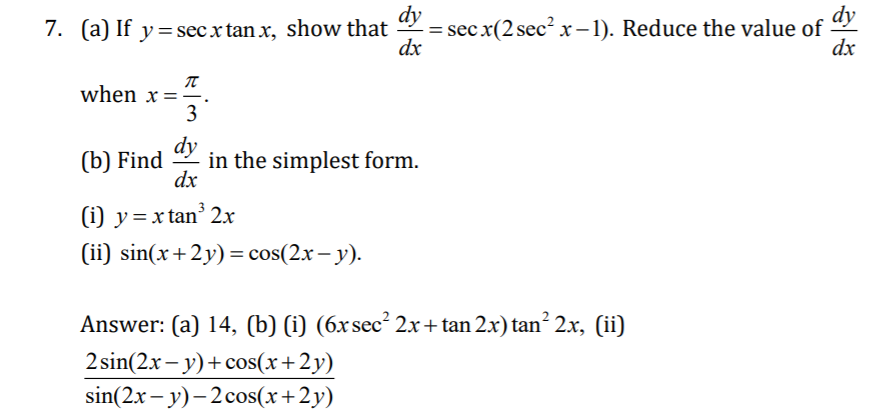



Solved Dy 7 A If Y Sec X Tan X Show That Sec X 2 Sec Chegg Com




Ex 9 4 14 Find Particular Solution Dy Dx Y Tan X Y 1



コメント
コメントを投稿